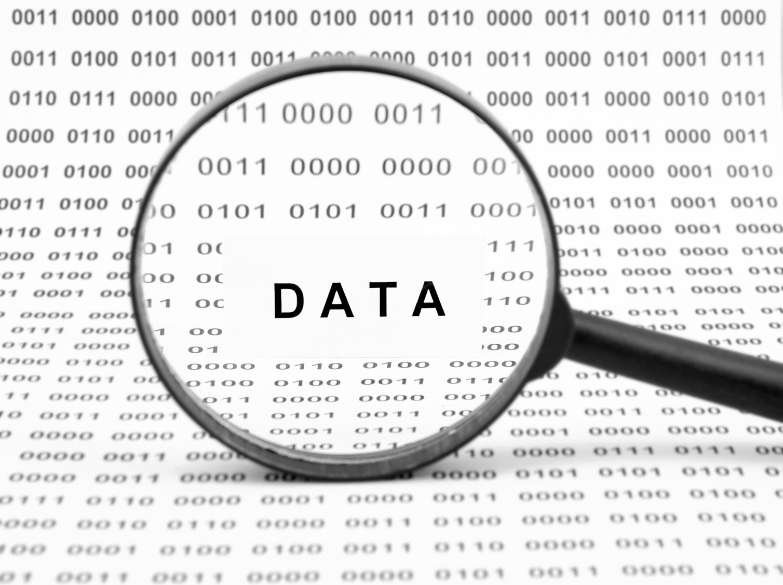Understanding GDPR: Rules, Rights, and Responsibilities of Data Management
- Home
- Insights
- Article
- Understanding GDPR: Rules, Rights, and Responsibilities of Data Management
AI and Machine Learning Success
News & Trends
Recommended Reads

Data Collection
As the data collection methods have extreme influence over the validity of the research outcomes, it is considered as the crucial aspect of the studies
Introduction: Background of GDPR and Its Significance in Data Management
The General Data Protection Regulation (GDPR) is a ground-breaking regulation that addresses the protection of personal data in the European Union (EU), and around the world, it is a transparent commitment to data privacy and data security. As organizations strengthen data privacy and data security measures, they are expected to also understand the rules of GDPR. In this article I will breakdown the rules of GDPR, the rights of individuals, and the responsibilities of organizations in respect of data. [1]
What is GDPR?
The GDPR is a massive piece of legislation outlining rules for how personal data of people in the EU is collected, processed, and stored. It places a responsibility on businesses to be transparent about their data handling and holds them accountable for how they protect it.
Key aspects of GDPR compliance include:
- Personal Data Protection
- Transparency in Data Processing
- Individuals’ Rights to Control Data
- Strict Penalties for Non-compliance
GDPR Rules: Key Provisions You Must Know
GDPR Rules: Key Provisions You Must Know
It’s very important to understand the key rules about GDPR for anyone who does business involving personal data. Here are the key parts of the GDPR:
1. Data Protection Principles
GDPR contains seven key principles that organizations must adhere to in order to comply with GDPR:
- Lawfulness, fairness and transparency
- Purpose limitation
- Data minimization
- Accuracy
- Storage limitation
- Integrity and confidentiality
- Accountability
2. Lawful basis for processing data
GDPR specifies legal basis for processing data, including:
- Consent
- Contractual necessity
- Legal obligation
- Vital interests
- Public task
- Legitimate interests
3. Requirement for Data Protection Officer (DPO)
Some organization are legally required to appoint a Data Protection Officer (DPO) to ensure that they have taken the appropriate steps to safeguard their data protection arrangements and comply with the General Data Protection Regulation (GDPR). [2]
GDPR Rights: Empowering Individuals
The GDPR states a very large number of rights for individuals about their personal data. These rights give individuals the power to decide how their data is used, stored, and processed.
1. Right of Access
Individuals have the right to get access to the personal data an organization holds about them.
2. Right to Rectification
The Data Subject has the right to request corrections if their personal data is inaccurate or incomplete.
3. Right to Erasure (Right to be Forgotten)
Individuals may request erasure of their data when it is no longer necessary for the purposes for which it was collected or when individuals withdraw their consent.
4. Right to Restrict Processing
Individuals can restrict the way data about them is processed in certain situations. An example is where they are contesting the accuracy of the data.
5. Right to Data Portability
The Data Subject may request their data in a structured, commonly used and machine-readable format so they can transfer this to another organization.
6. Right to Object
The Data Subject has the right to object to data processing regarding as it is being done for marketing purposes or where their data is being processed for legitimate interests.
7. Right to Automated Decision Making and Profiling
The Data Subject has the right not to be subject to a decision made on automated processing only – including profiling. [3]
GDPR Responsibilities: Ensuring Compliance
1. Security of data
Organizations must take appropriate organizational and technical measures to secure personal data from data breaches and unauthorized access.
2. Data minimization
Organizations must only collect data for the time that is reasonably needed for the purpose. Data minimization is of the key principles outlined in GDPR.
3. Breach notification
If an organization has a data breach it must inform its relevant supervisory authority and affected individuals no later than 72 hours after becoming aware of it.
4. Data Processing Agreement
If an organization has a third-party process personal data on its behalf, then it must have a data processing agreement (DPA).
5. Data Subject Rights
Organizations must have procedures in place to facilitate the reasonable exercise of data subject rights under GDPR, including the right to access personal data, to rectify personal data, or to erase personal data.
6. Data Protection Impact Assessment (DPIA)
A DPIA is required for high-risk processing to consider the potential impact on people’s privacy of a processing activity. [4]
GDPR Penalties: What Happens if you don't comply?
GDPR breaches can lead to very substantial fines and codes of conduct with fines as high as €20 million Euros or 4% of total worldwide annual turnover, whichever is higher. You can also lose your customers’ reputation and trust and are also open to litigation if you infringe on people’s rights.
Best Practices for GDPR Compliance
- Employee Training: Ensure your employees understand both the fundamental principles of GDPR and your obligations with respect to the safe handling of data.
- Regular Audits: Undertake frequent audits in relation to GDPR compliance and risk activity.
- Clear Consent Process: Obtain personal data through a clear and unambiguous consent questions that are transparent to individuals.
- Encrypting Data: Encrypt sensitive data so that should there be a data breach, the risk is minimised.
- Privacy Policy: Keep your privacy policies up to date by checking if any changes have occurred in your data processing.
GDPR and Data Management: An Essential Consideration for Today's Organizations
GDPR breaches can lead to very substantial fines and codes of conduct with fines as high as €20 million Euros or 4% of total worldwide annual turnover, whichever is higher. You can also lose your customers’ reputation and trust and are also open to litigation if you infringe on people’s rights.
Best Practices for GDPR Compliance
- Employee Training: Ensure your employees understand both the fundamental principles of GDPR and your obligations with respect to the safe handling of data.
- Regular Audits: Undertake frequent audits in relation to GDPR compliance and risk activity.
- Clear Consent Process: Obtain personal data through a clear and unambiguous consent questions that are transparent to individuals.
- Encrypting Data: Encrypt sensitive data so that should there be a data breach, the risk is minimised.
- Privacy Policy: Keep your privacy policies up to date by checking if any changes have occurred in your data processing.

Conclusion
For businesses that want to thrive in a data-aware world, mastering GDPR is necessary. By learning about and adhering to the rules of GDPR, considering individuals’ rights, and meeting your obligations, you can develop a secure data environment that generate trust with your customers and lead not only your organization to success.
At Statswork, we ensure to adhere to GDPR guidelines across all our services and solutions, helping you achieve seamless compliance and data security. Reach out for a free enquiry today!

References
- Labadie, C., & Legner, C. (2019, February). Understanding data protection regulations from a data management perspective: a capability-based approach to EU-GDPR. In Proceedings of the 14th International Conference on Wirtschaftsinformatik (2019).https://serval.unil.ch/en/notice/serval:BIB_65AAB323C49C
- Labadie, C., & Legner, C. (2023). Building data management capabilities to address data protection regulations: Learnings from EU-GDPR. Journal of Information Technology, 38(1), 16-44. https://journals.sagepub.com/doi/full/10.1177/02683962221141456
- Becker, R., Thorogood, A., Bovenberg, J., Mitchell, C., & Hall, A. (2022). Applying GDPR roles and responsibilities to scientific data sharing. International Data Privacy Law, 12(3), 207-219.https://academic.oup.com/idpl/article/12/3/207/6586598
- Arabsorkhi, A., & Khazaei, E. (2024). Blockchain technology and GDPR compliance: a comprehensive applicability model. International Journal of Web Research, 7(2), 49-63. https://ijwr.usc.ac.ir/article_205650.html
- Rhahla, M., Allegue, S., & Abdellatif, T. (2021). Guidelines for GDPR compliance in Big Data systems. Journal of Information Security and Applications, 61, 102896. https://www.sciencedirect.com/science/article/abs/pii/S221421262100123X




